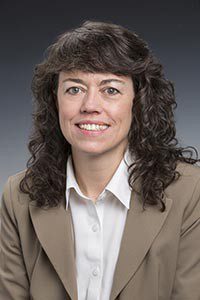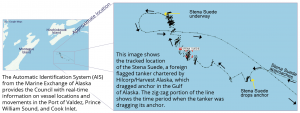
By Donna Schantz
Executive Director
After the 1989 Exxon Valdez oil spill, many of the people impacted used lessons learned to advocate for safeguards to ensure a spill like that never happens again. Thanks to the foresight, vigilance, and tireless efforts of these elected officials, government regulators, industry, and citizens, Prince William Sound is now recognized as having a world-class oil spill prevention and response system for the Valdez Marine Terminal and associated oil tankers. The biggest successes achieved in our region have been a result of these partners working together toward the common goal of moving oil safely.
Congress found that complacency on the part of industry and government was a major contributing factor to the Exxon Valdez spill. To combat this complacency, Congress established two regional citizens advisory councils, one in Prince William Sound and another in Cook Inlet. Neither council could satisfy the provisions under this federal mandate without dedicated volunteers from throughout their respective regions. Citizen oversight brings irreplaceable local knowledge and expertise to the table, and involves those with the most to lose from oil pollution in the decisions that can put their livelihoods, resources, and communities at risk. Since our formation, our work has helped bring about some changes and advancements that would not have happened had we not been in existence.
In addition to the comprehensive laws enacted through the landmark Oil Pollution Act of 1990, the Alaska Legislature introduced a series of bills immediately following the 1989 spill that resulted in some of the most comprehensive laws in the nation for preventing and cleaning up an oil spill. The legislature understood that in order to be effective, a spill response must be immediate, with adequate resources and trained personnel available to contain, control, and clean up the oil within the shortest possible time. Industry should be commended for the extensive amounts of equipment and new technologies employed in our region, especially the relatively new Crucial oil skimmers, escort and response tugs, and purpose-built oil spill response barges. This equipment, coupled with vigorous training programs for operators and oil spill responders, represents vast improvements over the response system in place in 1989.
It took a tragedy like the Exxon Valdez to create the robust prevention and response system in place today, but 33 years of successful prevention can inevitably lead back to complacency. It would be even more tragic if we ignored the hard-won lessons of our own history and let a focus on cost cutting diminish the protections resulting from that catastrophe. For our council, which represents the people, communities, and businesses hardest hit by the Exxon disaster, the cost of prevention and preparedness is marginal compared to the cost of another major oil spill.
The Council has been concerned for some time about budget cuts and reductions in staffing levels at key state and federal oversight agencies, as well as cost cutting within industry. The Council believes these reductions are putting at risk our region’s strong oil spill prevention, response, and oversight capabilities. The loss of institutional knowledge with long-time employees retiring, coupled with high turnover rates and increased workloads, are likely to elevate risk and the chances of an accident.
For instance, staffing levels at the Alaska Department of Environmental Conservation, Bureau of Land Management, and Joint Pipeline Office, agencies set up to ensure regulatory compliance, have been drastically reduced. These staffing reductions include the elimination of several qualified technical and engineering positions charged with monitoring the complex systems at the Valdez Marine Terminal. Other factors that contribute to heightened risk include ageing infrastructure, and intermittent and persistent breakdowns in communication and vessel tracking infrastructure including VHF capability and the radar coverage used to monitor and protect the shipping lanes used by oil tankers. Reductions in regulatory oversight and other protections put in place to prevent another devastating oil spill must be adequately addressed with proactive solutions if these safeguards are to be maintained. The Council stands ready to advocate for solutions that prevent this type of complacency from creeping back in.
Being a citizens’ council is more than just a title, it is the meaning behind our mission. It is only when citizens are involved in the process, working together with industry and government at all levels, that the safeguards designed to prepare for and prevent future oil spills can be maintained and continuously improved.

